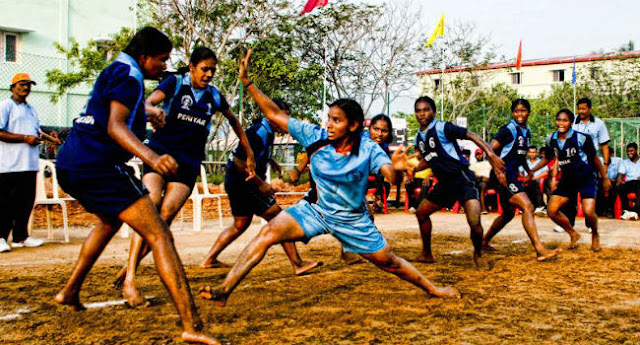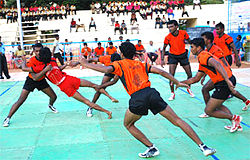History Of Circle Kabaddi Games

Nov 7, 2016 - Kabaddi games also known as Chedu-Gudu in South India, Gudu in Srilanka, Ha-Do. In fact, the circle style of Kabaddi originated in Punjab. History Of Circle Kabaddi Game In Hindi. Into play at the Pro Kabaddi League, Asian Games. By the Amateur Circle Kabaddi Federation of India. Each team alternates in sending a player into the opponents' court. If a player goes out of the boundary line during the course of the play, or if any part of his body touches the ground.
Recently, it was discovered that, for a few reactive group combinations, the CRW did not accurately predict potential hazardous reactions. Download statistics indicate wide global interest and usage with very few problems being reported. Crw32exe 85 download.
Kabaddi Kabaddi is sometimes referred to as the 'game of the masses' due to its popularity in Asia and its simple format. No sophisticated equipment is required to play the game. Kabaddi originated in South Asia and is played with two teams of 12 players (seven on court, and five in reserve). The game consists of two halves of 20 minutes each. Two teams compete., alternating between defence and offence. The purpose of the game is to reach the highest score by touching or capturing the opposing team's players, while continuously chanting 'kabaddi-kabaddi'.

Points are scored by raiding into the opponents' court and touching as many defence players as possible without getting caught. Players on the defensive side are called 'antis', while those on the offence are 'raiders'. The raider enters the opponent's court chanting the word 'kabaddi' while holding his breath and has to continue to do so until he returns to his home court. Antis touched by a raider during the attack are declared 'out' if they do not succeed in catching the raider before he returns to his home court.
The game calls for agility, good lung capacity, muscular coordination and quick reflexes. History Kabaddi dates back to pre-historic times, being used to ward off attacks by individuals and vice-versa. The game was popular in southern Asia, played in different forms under different names. The game, known as hu-tu-tu in western India, ha-do-do in eastern India and Bangladesh, chedugudu in southern India and kaunbada in northern India, has undergone a sea change through the ages. Modern kabaddi is a synthesis of the game played in its various forms under different names. The Kabaddi Federation of India (KFI) was founded in 1950, establishing standard rules and regulations for the game. The first Asian Kabaddi Championship was held in 1980.
The first World Kabaddi Championship (Circle Style) in the history of the game was organised in Hamilton, Canada, when about 14,000 spectators gathered to watch stars from India, Pakistan, Canada, England and the US compete. The first recognised World Cup in kabaddi as per Asian Amateur Kabaddi Federation (AAKF) and Olympic Council of Asia (OCA) norms was organised at Mumbai, India, in 2004. Kabaddi was first included as a competitive sport at the Asian Games in Beijing, in 1990. Rules Kabaddi competition shall be conducted in accordance with the Rules of the World Amateur Kabaddi Federation (IAKF). If seven or less teams participate, the matches will be played in a single group with a round robin system.